JOURNAL OF BIOMEDICAL AND ALLIED RESEARCH
Functional Impact of Fatigue in Post Covid-19 Patients
Inmediato Martin*
The Physiotherapy and Kinesiology career, Universidad del Norte, Paraguay
*Corresponding Author: Inmediato Martin, Full-time Extension and Research Professor of the Physiotherapy and Kinesiology career, Universidad del Norte, Paraguay.
| ReceivedJun 23, 2022 | RevisedJun 30, 2022 | AcceptedJul 4, 2022 | PublishedJul 14, 2022 |
Abstract
This study was conducted to determine the functional impact of fatigue in post COVID-19 patients, from Asunción and Greater Asunción, in the period from March to April 2022. The methodology of this research was designed through a retrospective, cross-sectional study and descriptive. This survey was answered anonymously, had 26 closed questions. The scale used in the study was the Modified Fatigue Impact Scale: MFIS, which contains items that verify the level of fatigue in relation to physical, cognitive and psychosocial effort. It is observed, in relation to the respondents, that they have had to rest more frequently or for longer periods, due to COVID-19, with 23% Sometimes, than with 23% Often, then with 24%. Few times,15% Never and finally with 12% Almost always. This shows that more than 2/3 of the respondents have experienced different degrees of needing to rest more frequently and/or for prolonged periods, due to COVID-19. In conclusion, we can determine that the impact of the disease at the physical level represented an inconvenience among the respondents, likewise in the subsequent Figures it is shown that the cognitive functions were not affected. This may indicate that the participants had a mild form of the disease or had immunity.
Keywords
Post COVID-19, MFIS, Functional fatigue, COVID-19
Introduction
In December 2019, a new type of pneumonia caused by the new strain of coronavirus, which the WHO called SARS-Cov-2, was identified in the city of Wuhan, China. Several studies reveal that the patient who acquired an infection by SASR-Cov-2 showed clinical symptoms beyond the time in which the acute phase of the disease is ordinarily considered to be over for 3 weeks, 3 months or called post-acute COVID [1,2]. A serious problem is the specificity of these manifestations, not in all these symptoms, and not in all patients with postCOVID, whose etiology may be unknown. In contrast, postCOVID manifestations are not known after other acute illnesses, and the mere mention of post viral fatigue syndrome and post- resuscitation syndrome cannot ensure a clear end of the distinction [3].
Among the symptoms most commonly referred to by post COVID-19 patients is fatigue [4], but so far, no relevant studies have been visualized on its functional impact on the functionality of patients. Based on the above, the following research question is established.
Research Questions and General Question
What is the functional impact of fatigue in post COVID-19 patients, from Asunción and Greater Asunción, in the period from March to April 2022?
Specific questions
• What are the sociodemographic characteristics in post COVID-19 patients from Asunción and Greater Asunción?
• What is the level of physical effort that fatigue represents in post COVID-19 patients, from Asunción and Greater Asunción?
• What is the level of cognitive effort present in post COVID-19 patients from Asunción and Greater Asunción?
• What is the level of psychosocial effort present in post COVID-19 patients from Asunción and Greater Asunción?
General 0bjective
To determine the functional impact of fatigue in post COVID-19 patients, from Asunción and Greater Asunción, in the period from March to April 2022.
Specific objectives
• To describe the sociodemographic characteristics in post COVID-19 patients from Asunción and Greater Asunción.
• To determine the level of physical effort that represents fatigue in post COVID-19 patients, from Asunción and Greater Asunción.
• To describe the level of cognitive effort present in the sample in post COVID-19 patients, from Asunción and Greater Asunción.
• Identify the level of psychosocial effort present in patients in post COVID-19 patients, from Asunción and Greater Asunción.
Justification
The investigative work is generated by the alarm generated by COVID-19, being a very sudden disease that affects a largepart of the population. And that we continue with people who suffer the consequences of this epidemic aims to measure the functional impact of fatigue in post COVID-19 patients, from Asunción and Greater Asunción because there is currently no work done on this topic. The purpose of this study is to determine the functional impact of fatigue in postCOVID-19 patients, from Asunción and Greater Asunción, in the period from March to April 2022. This research work constitutes a source of information by itself. It is carried out with the collaboration of the different patients who suffered from COVID-19 and when they contracted the virus, they had the different symptoms that are described, so the material will be useful to professionals who are in the area of physiotherapy and kinesiology as it details the different states that can be observed in patients in the recovery stage.
Materials and Methods
Study design
The type of study selected for this research work is descriptive, since it attempts to observe situations and events, how they are and how they manifest at a given point in time. According to temporality, it is transversal, because its objective is to know the behavior of the variables at a given moment and not their evolution over time. Analyze their incidence and interrelation at a given time. The type of design according to the intervention of the researcher is non-experimental since they are carried out without direct manipulation of the variables. Phenomena are observed as they occur in their natural context, and then analyzed. Retrospective because the study is carried out in the present time. A digital survey was used through Google Forms, based on the Modified FatigueImpact Scale (MFI)S, in addition to containing items on the sociodemographic characteristics of the study sample and the symptoms in post COVID-19 patients.
Study subjects
• Population: Patients, of both sexes, with Dx. of infection by SARS-COV-2, from 18 to 60 years of age from Asunción and Greater Asunción, in the period from March to April 2022.
• Sample: 92 Patients of both sexes, with Dx. of infection by SARS-COV-2, from 18 to 60 years of age from Asunción and Greater Asunción, in the period from March to April 2022.
• Sampling Type: The sampling is non- probabilistic for convenience, because only patients with the mentioned characteristics were considered.
• Inclusion Criteria: patients of both sexes, in the post COVID-19 stage, from the city of Asunción and Greater Asunción.
• Exclusion Criteria: Patients with systemic or metabolic pathologies. HTA Diabetes Mellitus.
Analysis of data
After data collection, they were processed and tabulated with Microsoft Excel 365 office software. Quantitative variables were expressed as mean and standard deviation, and qualitative variables were shown as frequency and percentage.
Ethical conduct of research
The study was carried out following the international ethical regulations established in the Universal Declaration of Human Rights (United Nations), the Universal Declaration on Bioethics and Human Rights (UNESCO), the Declaration of Helsinki (AMM), and the International Ethical Guidelines for Biomedical Research in Human Beings (CIOMS/WHO). The personal data of patients will not be published or disseminated.
The points of view expressed in this research, as well as thedifferent sources cited, are the sole responsibility of the authors; its content does not reflect the position of any public or private entity.
Results
Distribution of the sample according to age
A heterogeneous sample was obtained in terms of the ages of the people surveyed withCOVID-19, with an average age of 40.80 ± 14.6 years (Table 1).
| Average - Deviation standard | 40, 80 ± 14.6 years |
| Maximum Value | 77 years |
| Minimum Value | 18 years |
Table 1: Distribution of the sample according to age.
Distribution of the sample, according to sex
A greater participation of women is observed in the sample with 56.9%, and men with 37.6% (Figure 1). The sample covers Asunción and cities of the Central Department, an area with the highest population density in the country, and this sample shows us that it accompanies the level of contagion by COVID-19 registered at the country level, in particular, Asunción is observed with the highest amount contagion, followed by San Lorenzo and Fernando de la Mora, then Villa Elisa, Lambaré, Luque and finally Ypané, Villeta, Limpio and Capiatá. A heterogeneous sample was obtained in relation to the activities and/or professions of the respondents; highlighting the number of those infected with COVID-19, the student segment, followed by medicine, accounting, law. The "OTHERS" segment corresponds to those who have not completed said information. It is observed that the need for hospitalization by the respondents was almost nil, this may be an indicator that they contracted the mild form of the disease. It is observed that of the total number of respondents with COVID-19, 64% of participants only needed home treatment, 26% outpatient treatment, 7% admitted to the ward and only 1% went to the ICU.
Distribution of the sample, according to physical activity
It is observed, in relation to the respondents, that they have had to rest more frequently or for longer periods, due to COVID-19, with 23% Almost always, 23% Often, then with 24% Rarely, 15% Never and finally with 12% sometimes.
This shows that more than 2/3 of those surveyed have experienced different degrees of needing to rest more frequently and/or for long periods, as a consequence of COVID-19 (Figure 2).
In relation to whether the respondent has had to regulate their physical activities, as a consequence of COVID-19; It is observed that 26% were not affected response Never, then 24% response Rarely, 20% response Sometimes, with 19% response Often and then with 9% Response almost always (Figure 3).
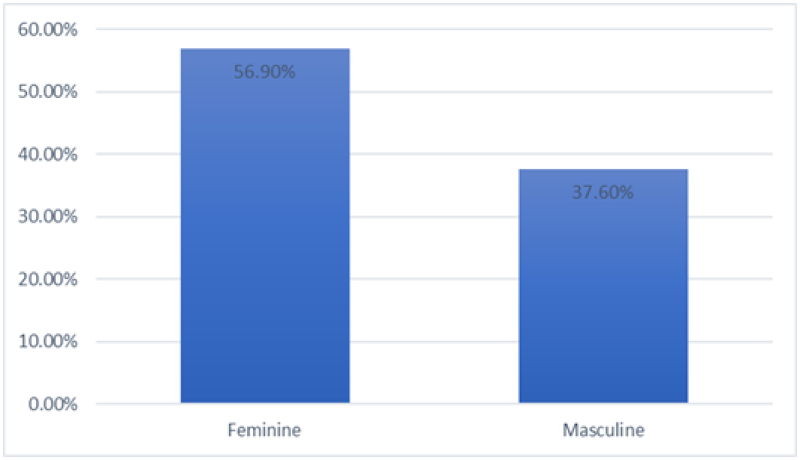
Figure 1: Distribution of the sample, according to sex.

Figure 2: Distribution of the sample, according to the need for rest more frequently or after longer periods of time.
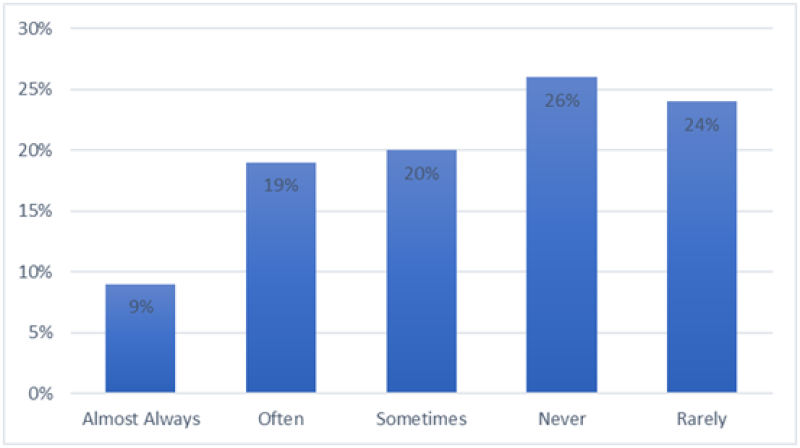
Figure 3: Distribution of the sample, according to the regulation of physical activity.
In relation to whether the respondent has been less motivated to carry out activities that require physical effort, as a consequence of COVID-19; It is observed that 30% is affected in the response Sometimes and 12% of the total number of respondents was not affected in the response Never. Causes COVID-19 disease has affected people in the motivation to perform activities that are recent physical exertion (Figure 4).
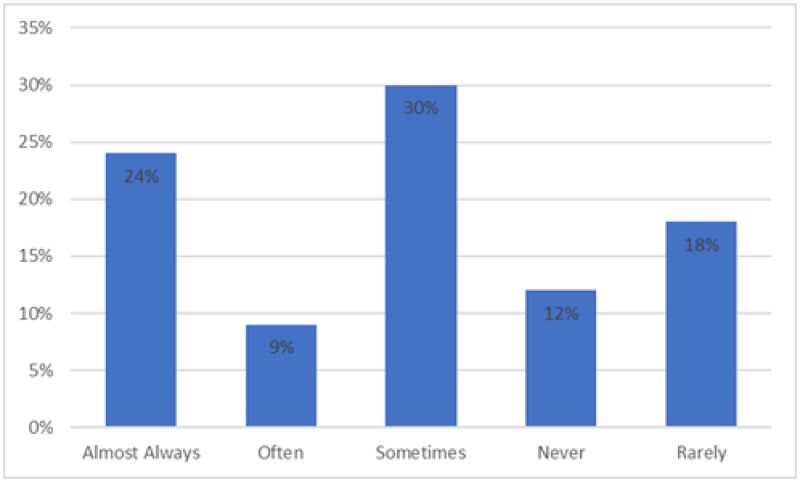
Figure 4: Distribution of the sample, according to the motivation to do activities that require physical exertion.
In relation to whether the respondent has problems making physical effort for long periods of time, as a result of COVID-19, that 30% are rarely affected and 10% of respondents are almost always affected. This shows that COVID-19 causes problems to perform physical efforts for long periods of time (Figure 5).
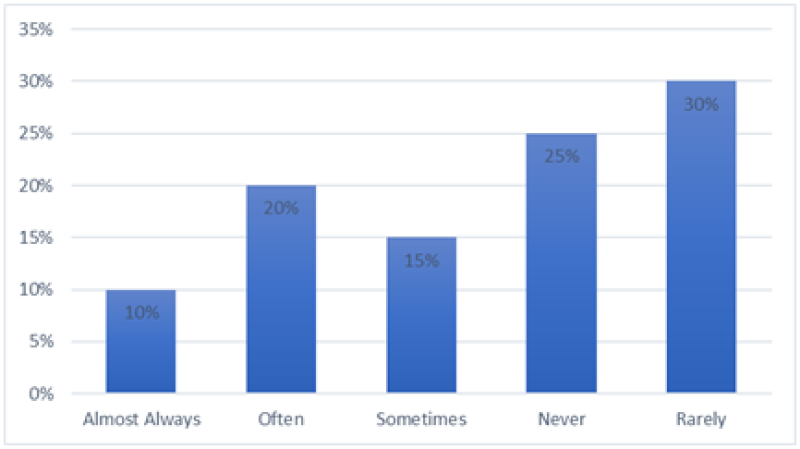
Figure 5: Distribution of the sample, according to problem in performing physical exertion for long periods of time.
It is observed, the relationship to whether the respondent feels weak muscles, as a result of COVID-19, with 30% Sometimes, then 26% Rarely, then with 21% Never, 12% Often, and finally with 8% Almost always. This shows that only 21% did not feel their muscles weak Answer Never, while the others have experienced that their muscles felt weak due to the effects of COVID-19 (Figure 6).
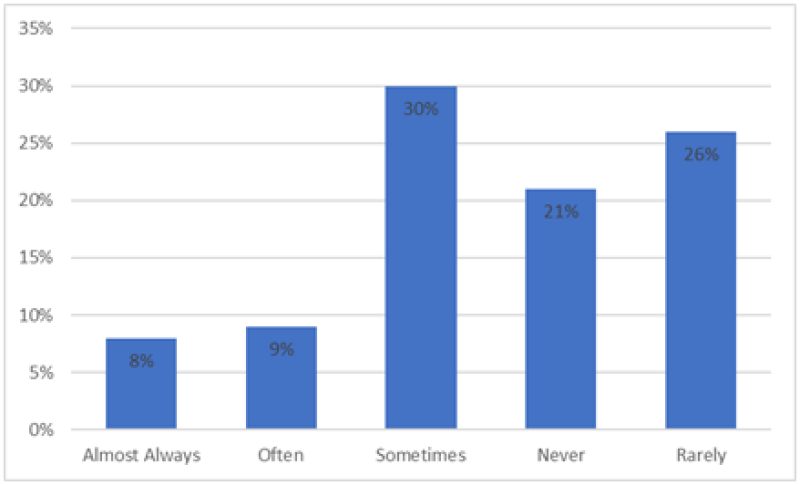
Figure 6: Distribution of the sample, according to muscle weakness.
It is observed, in relation to the respondents, that they have had to rest more frequently or for longer periods, due to COVID-19, with 23% Almost always, 23% Often, then with 24% Rarely, 15% Never and finally with 12% Sometimes. This shows that more than 2/3 of those surveyed have experienced different degrees of needing to rest more frequently and/or for long periods, as a consequence of COVID-19 (Figure 7).It can be seen that 27% were never affected by the COVID-19 response, while the others have had difficulties, at different levels, in staying alert for long periods of time (Figure 8).
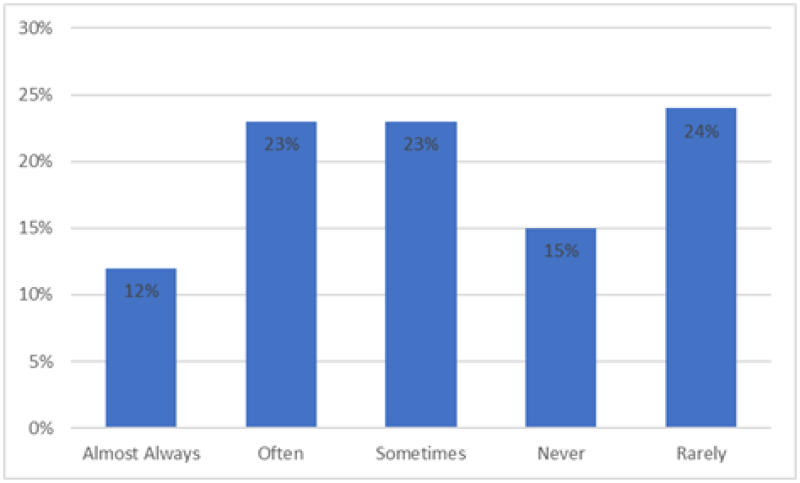
Figure 7: Distribution of the sample, according to need of rest more frequently/for longer periods of time.
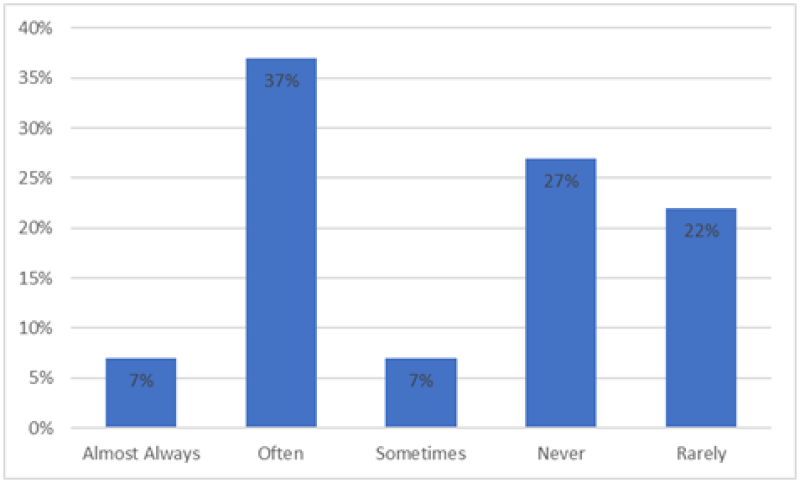
Figure 8: Distribution of the sample, according to difficulty staying alert for long periods of time.
It is observed, in relation to this, the respondent has been less motivated to participate in social activities, because of COVID-19; 29% were not affected response Never and 10% of respondents almost always. He infers that the disease does not have much impact on the desire to participate in social activities (Figure 9).
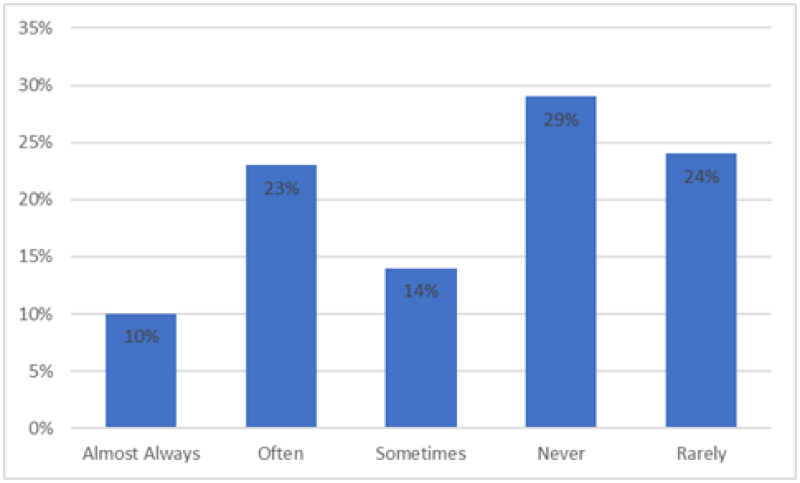
Figure 9: Distribution of the sample, according to less motivated to participate in social activities.
Discussion
The present investigation obtained a heterogeneous sample in terms of the ages of the people surveyed with COVID-19, with an average age of 40.80 ±14.6 years. In the sample, a greater participation of women with 56.9%, and men with 37.6%. The need for hospitalization by the respondents was almost nil, this may be an indicator that they contracted the mild form of the disease. We can see that of thetotal number of respondents with COVID-19, 64% of participants only needed home treatment, 26% outpatient treatment, 7% admitted to the ward and only 1% went to the ICU. A publication made by the same MSPyBS of Py, the population at risk are people who have underlying conditions such as, for example, CVD, kidney, ETC. Performing a rank discrimination in a group of 10 years between 20 to 60 of the economically active population is 800 thousand people.One out of every five people 19% in Paraguay has at least one basic pathology and of those 19% approximately 310 thousand people, most of them are 60 or older with basic problems. And about185,000 people aged 65 and older are at highest risk of developing severe COVID- 19 because of their age alone. Although there was a greater participation of women than men when carrying out the survey, the information available on the cases of COVID-19 at the global level is varied: in some countries, they refer to a greater predisposition of cases in men, of the Similarly in the country bulls greater numbers of chaos in women and other almost identical proportions. While severity and mortality are consistently higher for men in different countries. Taking the peak as a reference, according to the MSPyBS, hospitalized in the ward reached 4000 patients and more than 600 in the ICU, this contrasts the results obtained by the respondents in terms of their hospitalization requirement [5-7]. It is observed in relation to whether the respondent has been limited in their abilities to perform tasks outside the home, because of COVID-19, in which thirty-two percent were never affected, then 31% rarely, Nineteen percent Sometimes, 12% Often and then with 4% almost always. It suggests that the disease does not have much impact in this regard. It is observed, in relation to whether the respondent has problems making physical effort for long periods of time, as a result of COVID-19, that 30% are rarely affected and 10% of respondents are almost always affected. This shows that COVID-19 causes problems to perform physical efforts for long periods of time.It is observed, the relationship to whether the respondent feels weak muscles, as a result of COVID-19, with 30% Sometimes, that 26% Rarely, then with 21% Never, 12% Often, and finally with8% Almost forever. This shows that only 21% never felt weak in their muscles, while the rest have experienced that their muscles felt weak due to the effects of COVID-19 [8-10].
It is observed, in relation to whether the respondent has felt physically uncomfortable. With 37% Sometimes and with 6% of those surveyed Almost always. This shows that the rest of the respondents have experienced, in different ways, physical discomfort due to the effects of COVID-19. It is observed, in relation to whether the respondent has had problems completing tasks that require physical effort, due to COVID-19 with 37% Rarely and with 3% Almost always. This shows that if problems have arisen as a result of COVID-19. It is observed, in relation to whether the respondent has limited their physical activities, because of COVID-19, with 25% Sometimes, that 23% Often, then with 21% Never, 18% Rarely and finally with 10 % Always. Stating that more than 2/3 have experienced the need to limit their physical activities. It is observed, in relation to the respondents, they have had to rest more frequently or for longer periods, due to COVID-19, with 23% Sometimes, 23% Often, then with 24% Rarely, 15% Never and finally with 12% Almost always. This shows that more 0than 2/3 of those surveyed have experienced different degrees of needing to rest more frequently and/or for long periods, because of COVID-19 [11].
Although the results of the survey show a low impact at physical levels, studies related to post-COVID-19 fatigue show that the most frequent manifestations are arthralgia, myalgia, cramps, muscle contractures, back pain and atrophy and weakness. muscular. [12,13]. Fatigue and muscle weakness are the manifestations among all in patients who required hospitalization as well as those who did not. A study carried out in Spain by the Long COVID Group of the SED, presented at the SED Bilbao 2021 congress of patients admitted due to COVID, existed in 60.8% of patients with pain and 74.5% with fatigue. Having all these alterations a great impact on the functional motor capacity of the patients, with a great decrease in their quality of life and in their reintegration into the labor market. Where it can be seen that women were more affected by 73.9% and men by 51.5%.We observe, in relation to whether the respondent has presented difficulty organizing their thoughts when performing tasks at home or work, because of COVID-19 with 34% Never and with 3% always. Stating that, although more than 30 respondents were not affected, the rest presented some difficulty [14,15].
According to the Spanish Society of Neurology SEN, in one of their papers presented, they revealed that more than 3% of consultations in neurology services are from patients who had COVID-19, where they highlight that headache represents 41%, cognitive signs in a 21%, sensory alterations 12%, with symptoms lasting more than 4 months.Other studies carried out in the city of Madrid indicate that 57% of people who go to health services are due to cognitive symptoms, memory alterations 77% and attention alterations 43%. Likewise, a study carried out in Albacete among more than 800 people highlight the symptoms of attention problems in 67%, memory in67.5% and clarity of thought in 62% [16,17].It is observed, in relation to this, the respondent has been less motivated to participate in social activities, because of COVID-19; 29% were never affected and 10% of those surveyed almost always. He infers that the disease does not have much impact on the desire to participate in social activities.The limitations include no investigations were conducted regarding type of therapeutic of COVID-19 for the participants in the study.
Conclusion
We can determine that the impact of the disease, at a physical level, represented an inconvenience among the respondents, likewise in the subsequent graphs it is shown that the cognitive functions were not affected. This may indicate that the participants had a mild form of the disease or had immunity.
References
1. Garro M, Appiani F, Duarte J, Lisi G. Post-COVID Syndrome and Chronic Fatigue Syndrome: Two sides of the same coin?
2. Vasquez C. Efficacy of the Modified Fatigue Scale. University of Zaragoza Faculty of Health Sciences. 2013.
3. Aspuru A. Post-COVID19 fatigue and dysautonomia. University of the Basque Country. 2021.
4. Callero P. Post-COVID 19 fatigue and anatomoclinical correlation-Comparison with Chronic Fatigue Syndrome. University of the Basque Country. 2021.
5. Physiotherapy Unit. Respiratory physiotherapy. Sant Joan D'Alacant.
6. Hernández Sampieri, R, et al. Investigation methodology. McGraw Hill. 2014;154-5.
7. Coordination Center for Health Alerts and Emergencies. Microbiological information about SARS-CoV-2. Ministry of Health, Spain. 2021.
8. Bouza E, Cantón R, Ramos P, García A, García A, Gómez J, et al. Post-COVID Syndrome: A reflection and opinion document. NLM. 2021. CrossRef
9. López-Pérez GT, Ramírez-Sandoval MD, Torres-Altamirano MS. Pathophysiology of multi-organ damage in SARS-CoV-2 infection. Acta Pediátrica de México. 2020;41(S1):27-41.
10. Pérez C. Myalgic Encephalitis or chronic fatigue syndrome: Implications for Its Approach from Pain Units in The Post-COVID Era. Magazine of the Spanish Society of Pain. 2021. CrossRef
11. Aragón-Nogales R, Vargas-Almanza I, Miranda-Novales MG. COVID-19 by SARS-CoV-2: the new health emergency. Revista Mexicana de Pediatria. 2020;86(6):213-8.CrossRef
12. Shoumann WM, Hegazy AA, Nafae RM, Ragab MI, Samra SR, Ibrahim DA, Al-Mahrouky TH, Sileem AE. Use of Ivermectin as a Potential Chemoprophylaxis for COVID-19 in Egypt: A Randomized Clinical Trial. J Clin Diagnostic Res. 2021;15(2).
13. Hegazy AA. Ivermectin for Early Treatment and Prophylaxis of COVID-19 When Exposed to Patients-Authorâ€TM s Perspective. Biomed J Sci Technol Res. 2021;40(3):32310-1.
14. Official College of Biologists of the Community of Madrid. SARS-CoV-2. Structure and mechanism of action. COBCM. 2020.
15. Duarte R, Velasco Á, Sánchez J, Reyes L. Adaptation and validation of the fatigue impact scale. SciELO. 2017.
16. Ruiz A, Jiménez M. SARS-CoV-2 and the acute respiratory syndrome (COVID-19) pandemic. SciELO. 2020.
17. Onoda M, Martínez M. Diagnostic laboratory tests for covid-19. Infect Path Group Spanish Association Primary Care Paediatrics. 2020.
Inmediato Martin*
The Physiotherapy and Kinesiology career, Universidad del Norte, Paraguay
*Corresponding Author: Inmediato Martin, Full-time Extension and Research Professor of the Physiotherapy and Kinesiology career, Universidad del Norte, Paraguay.
Copyright© 2022 by Martin I. All rights reserved. This is an open-access article distributed under the terms of the Creative Commons Attribution License, which permits unrestricted use, distribution, and reproduction in any medium, provided the original author and source are credited.
Martin I. Functional Impact of Fatigue in Post Covid-19 Patients. J Biomed Allied Res. 2022;4(1):1-12. DOI: https://doi.org/10.37191/Mapsci-2582-4937-4(1)-026
